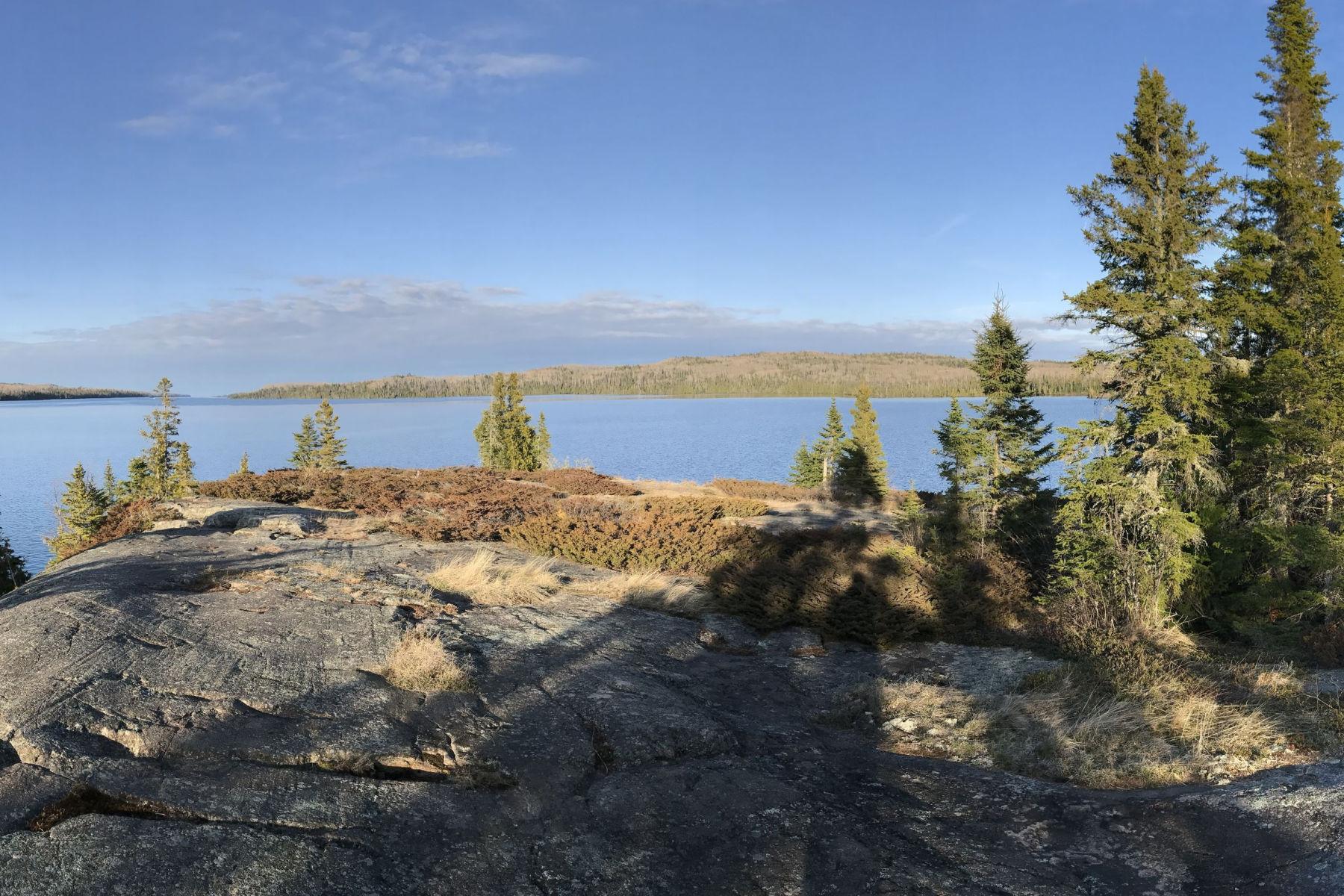
Article Summary: Isle Royale National Park Facts
Isle Royale National Park Facts! In this article, we provide you with 11 amazing facts about one of America’s most magnificent national parks.
More Than Just Parks is your one-stop-shop when it comes to learning everything you’ll need to know about America’s national parks. We’ve got expert guides, beautiful photos, helpful tips, breathtaking films and so much more.
I’ve been to so many of these amazing places since retiring from teaching in 2018. Did I mention that I taught history? I spent a lifetime teaching about the history behind some of these natural wonders. Then I got to see them firsthand.
And now I’m sharing some of the incredible stories about these beautiful places with you. It doesn’t get any better than that!
More Than Just Parks takes a deeper dive with its national park facts. We’ve done our homework so that you’ll get more than you bargained for.
Without further ado, let’s dive in.
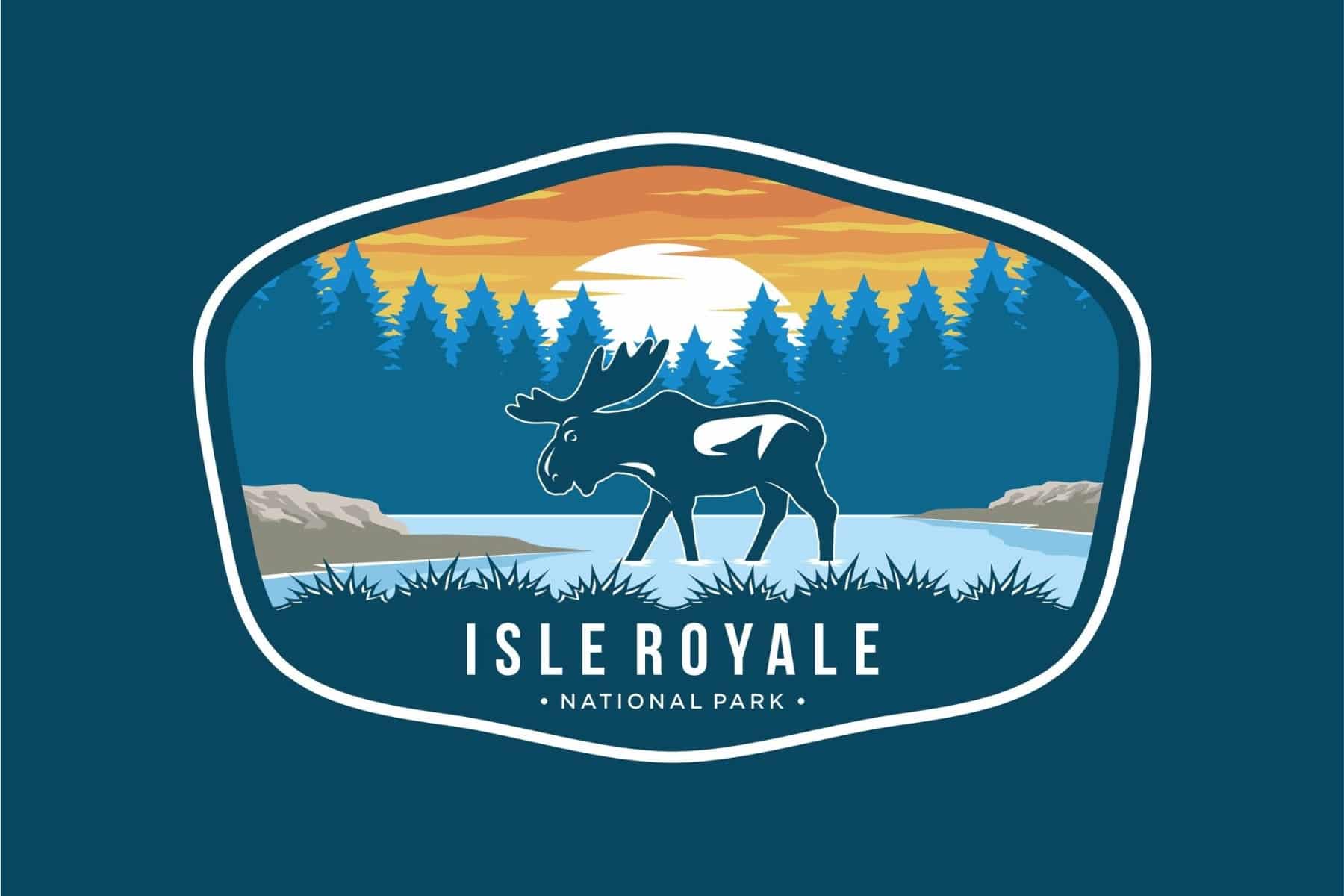
Table Of Contents: Isle Royale National Park Facts
Isle Royale National Park Facts
- Facts About Isle Royale National Park
- Isle Royale National Park Facts
- Top 5 Isle Royale National Park Facts
- Top 11 Isle Royale National Park Facts
- 6. Isle Royale Is One Of The Least Visited National Parks
- 7. The Park Has A Wolf Relocation Program
- 8. Isle Royale Has A History Of Deadly Fires
- 9. Isle Royale Has Many Bird Species
- 10. There Have More Than 25 Shipwrecks At Isle Royale
- 11. The Park Closes For Winter
- Why Trust Us About Isle Royale National Park?
- Meet The Parks Brothers
- Map Of Isle Royale National Park
- We Hope You’ll Follow Our Journey
Facts About Isle Royale National Park
Some Basic Facts About Isle Royale National Park
Isle Royale National Park is a beautiful and wild park located in Michigan. The park covers over 571,000 acres of land and is home to a wide variety of plant and animal life, as well as several unique geological features.
Isle Royale is an island located in Lake Superior, the largest of the Great Lakes. The park is known for its rugged and remote wilderness, with few roads or developed facilities. It is a popular destination for hikers, who can explore the island’s many trails and backcountry campsites.
The park’s landscape is diverse, with forests of maple and birch trees, alpine meadows, and crystal clear streams and lakes. The park is also home to a wide variety of plant and animal life, including moose, wolves, and over 200 species of birds.
There are many ways to explore and enjoy Isle Royale National Park. Visitors can go hiking or backpacking on the park’s trails, go fishing or boating in the park’s lakes, or even go scuba diving in the park’s clear waters. There are also several campgrounds and lodges located within the park, providing comfortable accommodations for visitors.
Isle Royale National Park is a beautiful and wild place, offering visitors the opportunity to experience the beauty and majesty of the natural world in a truly special setting. It is a great destination for outdoor enthusiasts, with plenty of opportunities for hiking, camping, and other outdoor activities.
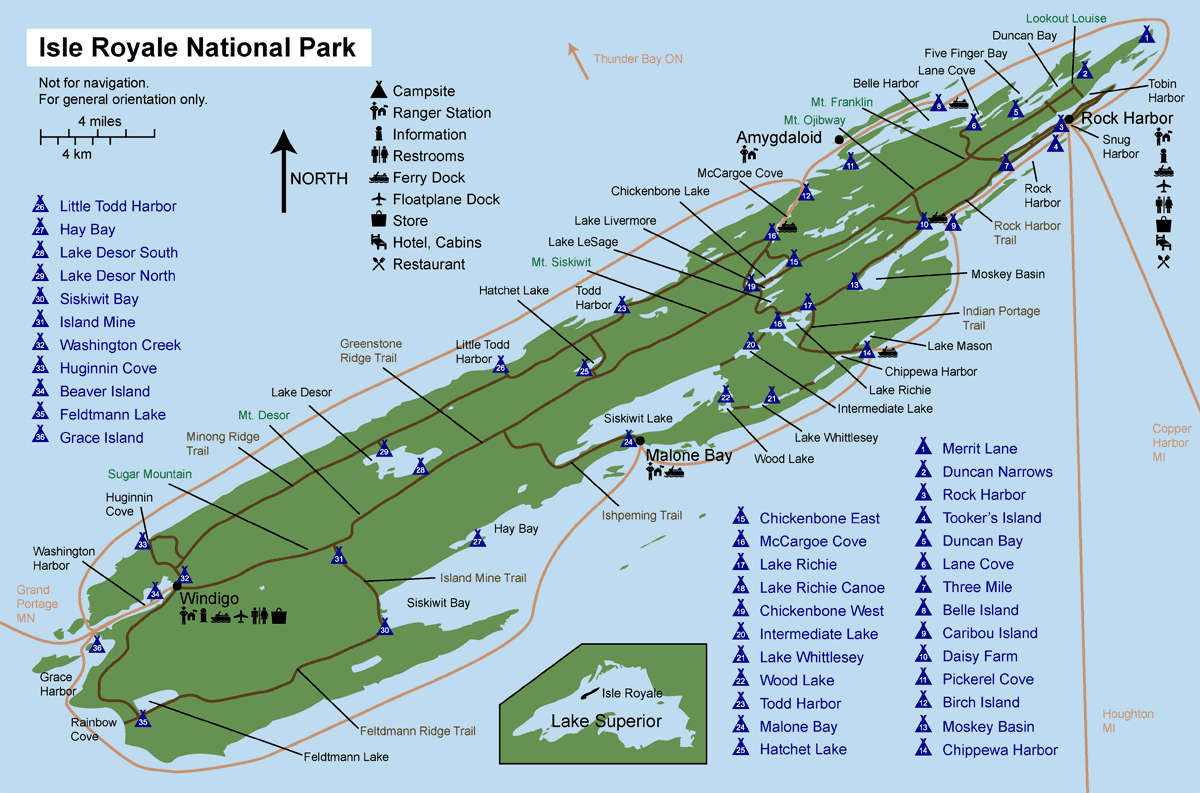
Now Here Are Some Basic Facts
- Location: Michigan
- Acreage: 572,000 acres
- Visitation: Isle Royale is one of the least-visited national parks in the U.S., averaging around 20,000 visitors per year, according to the National Park Service website.
- Highest Elevation: The highest elevation on the island is Ishpeming Point, 705 feet above the level of the lake.
- Lowest Elevation: The lowest elevation found in Isle Royale is 601 feet at Lake Superior.
- Average Annual Precipitation: The rainy period of the year lasts for 8.4 months, from March 23 to December 2, with a sliding 31-day rainfall of at least 0.5 inches.
- When Did It Become A National Park? Isle Royale National Park was authorized by Congress on March 3, 1931 by President Herbert Hoover “to conserve a prime example of North Woods Wilderness.” Isle Royale National Park was established on April 3, 1940 by President Franklin D. Roosevelt.
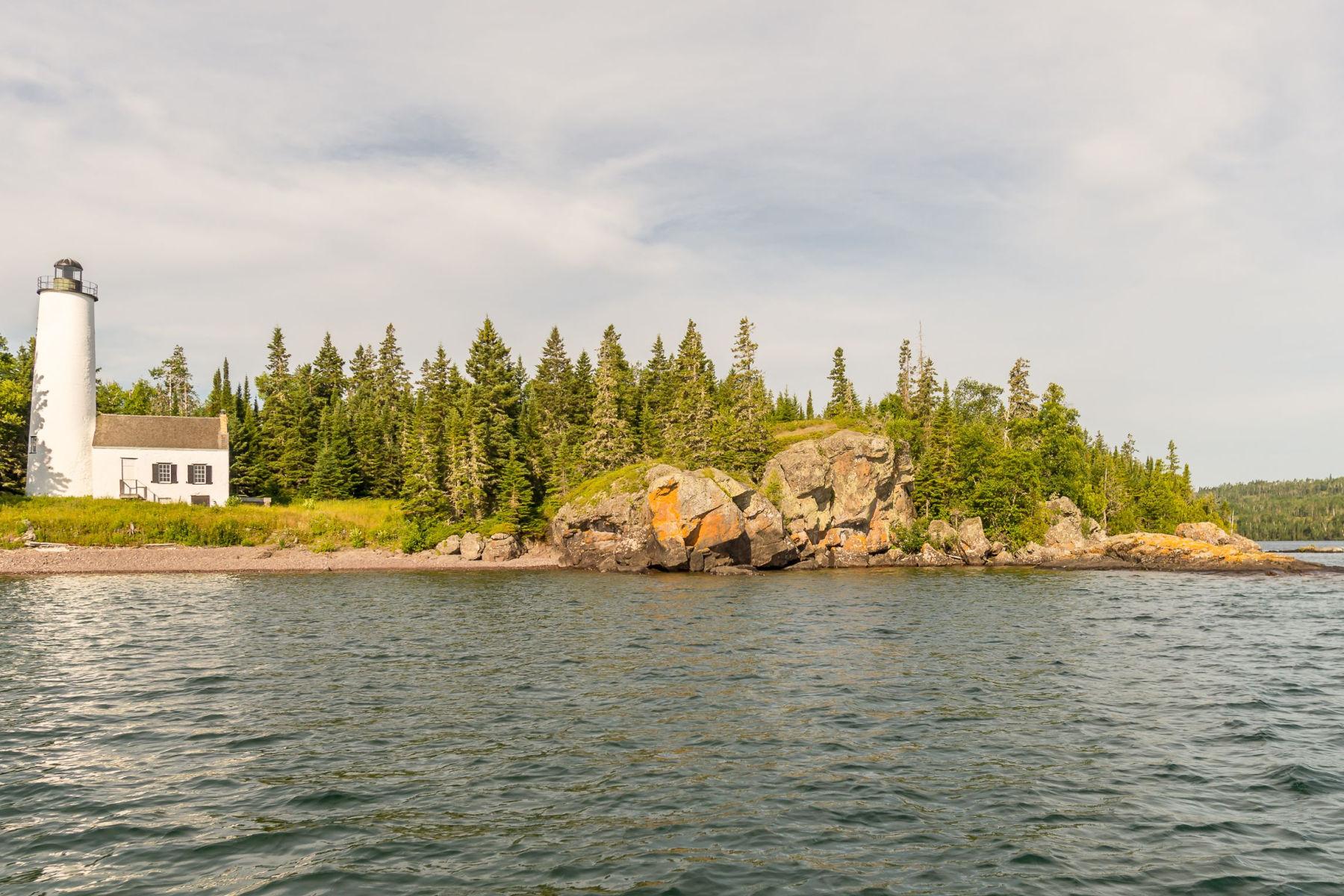
CHECK OUT: 6 Beautiful Michigan National Parks You Need To See
Isle Royale National Park Facts
Top 5 Isle Royale National Park Facts
1. Isle Royale Had An Active Sea-Faring Trade
For someone who is a retired history teacher and lifelong history buff, for me one of the most fascinating of the Isle Royale National Park Facts has to do with ships which frequented this area.
According to the National Park Service, Native American copper hunters were probably the first navigators to risk the dangerous Lake Superior waters in order to travel to Isle Royale.
They most likely used the birch bark canoe, which was strong and versatile.

Isle Royale Was A Voyageurs Highway
During the 1600s, European-American missionaries, traders, and explorers who ventured to Isle Royale also used the canoe.
The famous route just north of lsle Royale, the “Voyageurs Highway,” was traveled by many canoes carrying trade goods from Mackinac or Montreal to get to Grand Portage.
Between the 1770s and the 1820s, furs were transported by the Northwest Company from Grand Portage (and later, Fort William) to Sault Sainte Marie in sailing ships.

The American Fur Company
It was not until 1837 when the American Fur Company established fishing posts on the island that large vessels and regular boat service began to arrive.
The American Fur Company had fishing operations at several sites on Isle Royale, with major warehouses located at Siskiwit Bay and Rock Harbor. These warehouses were visited by company-owned schooners that delivered supplies to the island and transported fish to Sault Sainte Marie.
After the Isle Royale American Fur Company fisheries closed in 1839, the island was not frequented by large sailing ships until the first copper mining rush in 1843, when the island saw an influx of ships transporting miners and supplies.
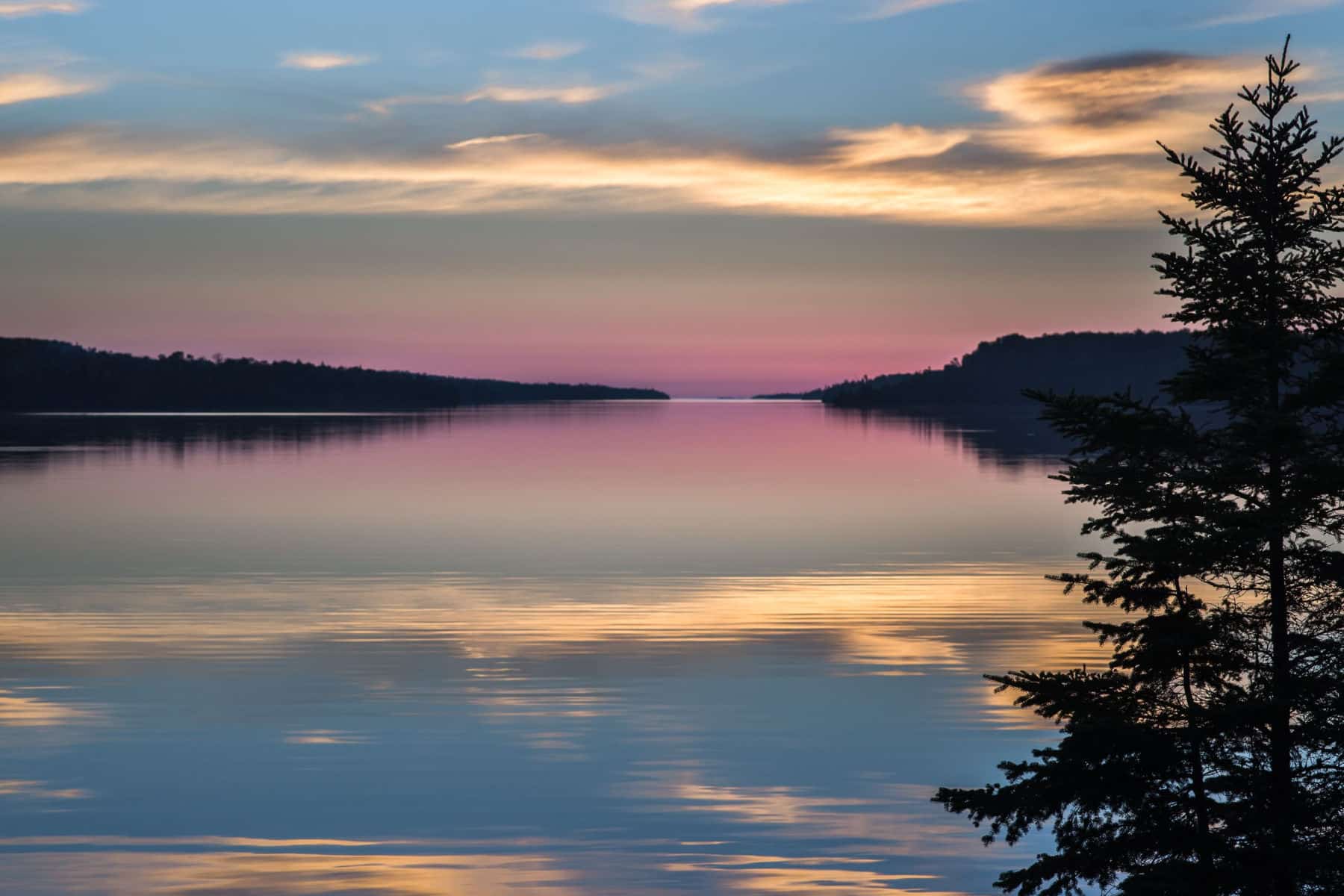
CHECK OUT: 25 Bucket List Famous Landmarks In America (MUST-SEE)
2. The Park Is Not Easily Accessible
Another of the more interesting Isle Royale National Park Facts, especially if you’re planning a visit there, has to do with its physical accessibility.
Isle Royale’s physical isolation and primitive wilderness challenged human use for centuries; ironically today it has become the Island’s main attraction.
Accessible only by boat or seaplane, visitors come to experience this island park through hiking its trails, paddling its inland waterways, exploring its rugged coast, or venturing into the depth of its shipwrecks.

CHECK OUT: 11 AMAZING Facts About Acadia National Park
3. Isle Royale Is A UNESCO International Biosphere Reserve
One of my favorite Isle Royale National Park Facts is that, in 1980, the park was named a UNESCO International Biosphere Reserve.
What are “biosphere reserves?” Biosphere reserves are ‘learning places for sustainable development.’ They are sites for testing interdisciplinary approaches to understanding and managing changes and interactions between social and ecological systems, including conflict prevention and management of biodiversity.
They are also places which provide local solutions to global challenges.
Biosphere reserves include terrestrial, marine and coastal ecosystems. Each site promotes solutions reconciling the conservation of biodiversity with its sustainable use.

CHECK OUT: 12 AMAZING Facts About Big Bend National Park
4. The Park Is Home To A Variety Of Creatures
Wildlife watchers will certainly enjoy the next of our Isle Royale National Park Facts. The park is home to a variety of creatures.
They include: beavers, foxes, moose, rodents, snowshoe hares and wolves.
The area has become one of the most significant study sites for predator-prey interactions and its wolves are among the most famous wild animals in the world.

CHECK OUT: A Brief (& Informative) History Of America’s National Park Rangers
5. Isle Royale Is Made Up Of Many Islands
Here’s another amazing Isle Royale National Park Fact. The park is composed of not one, but many islands.
In fact, it’s actually one large island surrounded by over 450 smaller islands.
Isle Royale encompasses a total area of 850 square miles including submerged land, which extends 4 1/2 miles out into the largest fresh water lake in the world.
Long and thin, the large island (Isle Royale) is 45 miles in length and about 9 miles wide at its widest point. Along with Isle Royale and its surrounding islands.
The park contains all submerged lands within a few miles of the islands.
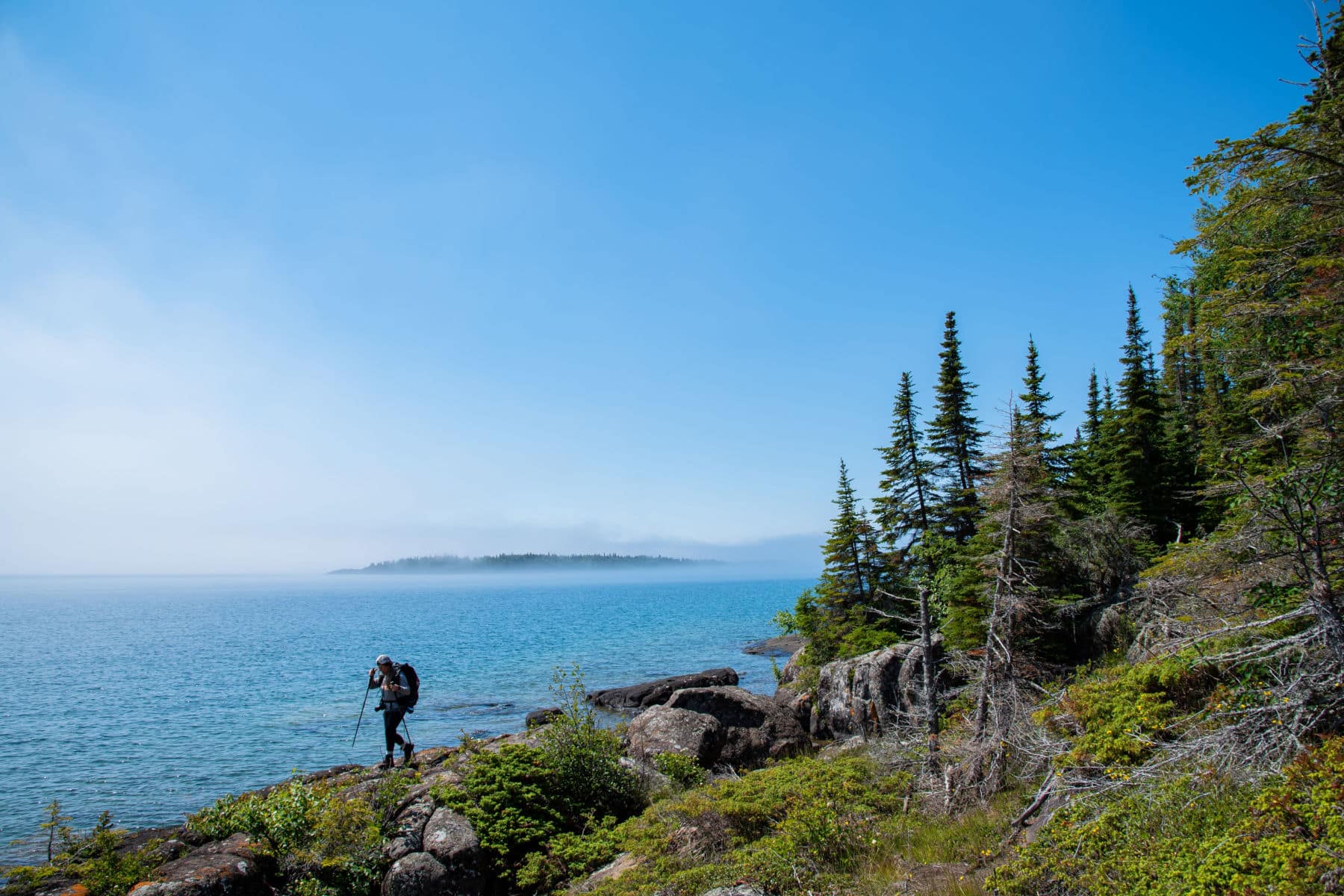
CHECK OUT: 14 AMAZING Facts About Biscayne National Park
Top 11 Isle Royale National Park Facts
6. Isle Royale Is One Of The Least Visited National Parks
Now if you’re someone who isn’t too fond of crowded national parks then our next Isle Royale National Park Fact ought to have you jumping for joy. Isle Royale is one of the least visited national parks.
In 2018, over 25,000 people visited the site. There are national parks that see 25,000 visitors in a week!
Compare that to The Great Smoky Mountains National Park, already the nation’s most-visited national park, which welcomed a record 11.4 million visitors in 2018. That’s almost 220.000 visitors each week!
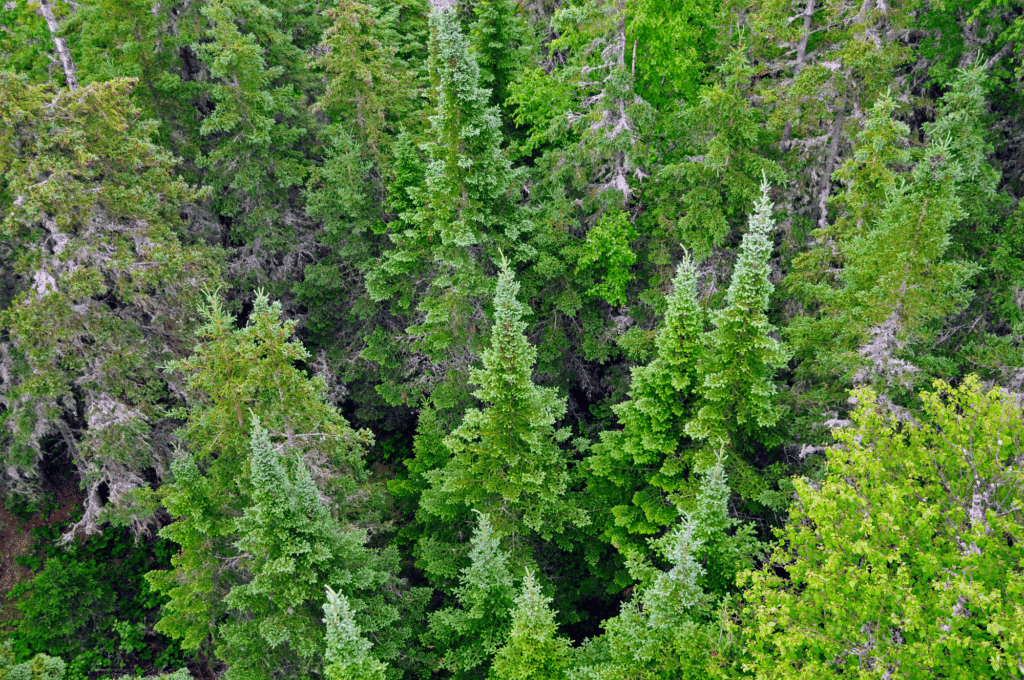
CHECK OUT: 12 AMAZING Facts About Capitol Reef National Park
7. The Park Has A Wolf Relocation Program
One of the least known yet most interesting of the Isle Royale National Park Facts is that the park has a Wolf Relocation Program.
Wolves first arrived to Isle Royale in the late 1940’s after crossing an ice bridge. Researchers began annual winter observations in 1958. The population has reached as high as 50 and as low as two.
Isle Royale began wolf relocations began in Fall 2018 when gray wolves in the Great Lakes region were still protected by the USFWS reinstatement of gray wolves to the Endangered Species List.
After almost 45 years, gray wolves were de-listed from the Endangered Species List in October, 2020.

CHECK OUT: 10 FASCINATING Facts About Cuyahoga Valley National Park
8. Isle Royale Has A History Of Deadly Fires
Just when you thought we couldn’t come up with any additional Isle Royale National Park Facts we surprise you. Isle Royale Has A History Of Deadly Fires.
According to the National Park Service, there were 31 fires between 1847 and 1898.
On July 25, 1936, a large fire started on Isle Royale near Siskiwit Bay. It is unclear whether this fire was human or lightning caused.
Burning 27,000 acres, about one-third of the island, this fire had a more profound effect on the vegetation and animal life of Isle Royale than any other single historical event to date.

In 1948, fire broke out on Isle Royale following a lightning strike southeast of Lake Desor. This fire burned approximately 1,440 acres in an area previously burned by the Fire of 1936.

CHECK OUT: 10 FASCINATING Facts About Denali National Park
9. Isle Royale Has Many Bird Species
We haven’t forgotten about our bird-watchers. Our next Isle Royale National Park Fact is for you!
The park happens to be home to many bird species.
They include: the sandhill crane, great blue heron, downy woodpecker, snow bunting, double-breasted cormorant, winter wren and ovenbird.
Currently, there are 82 bird species that frequent the Isle Royale.

CHECK OUT: 15 (FASCINATING) Death Valley National Parks Facts You Probably Didn’t Know
10. There Have More Than 25 Shipwrecks At Isle Royale
One of my favorite Isle Royale National Park Facts has to do with ships. Or, to be more specific, with shipwrecks.
The list of shipwrecks of Isle Royale includes more than 25 ships that have been sunk near Isle Royale in Lake Superior.
Isle Royale has been an obstacle to shipping on Lake Superior since the earliest days.
In fact, there are ten shipwrecks at Isle Royale National Park that have been listed on the National Register.
These include the Alogma, America, Henry Chisholm, Chester A. Congdon, George M. Cox, Cumberland, Emperor, Glenlyon, Kamloops, and the Monarch.
One of the earliest shipwrecks would be that of the Kamloops in 1927.

CHECK OUT: 11 SURPRISING Everglades National Park Facts
11. The Park Closes For Winter
While the last of our Isle Royale National Park Facts may not be the most interesting, it’s definitely one that’s worth knowing if you’re planning on visiting.
Isle Royale National Park closes for winter, which means visitors are not allowed into the park.
The park is open from mid-April to the end of October and closes from November. This is because the region experiences intense winter weather.
The park being closed in the winter months results in a low number of visitors annually, making it one of the least visited national parks in the United States.
They are not fully operational throughout the year. However, the national park gets many repeat visitors.
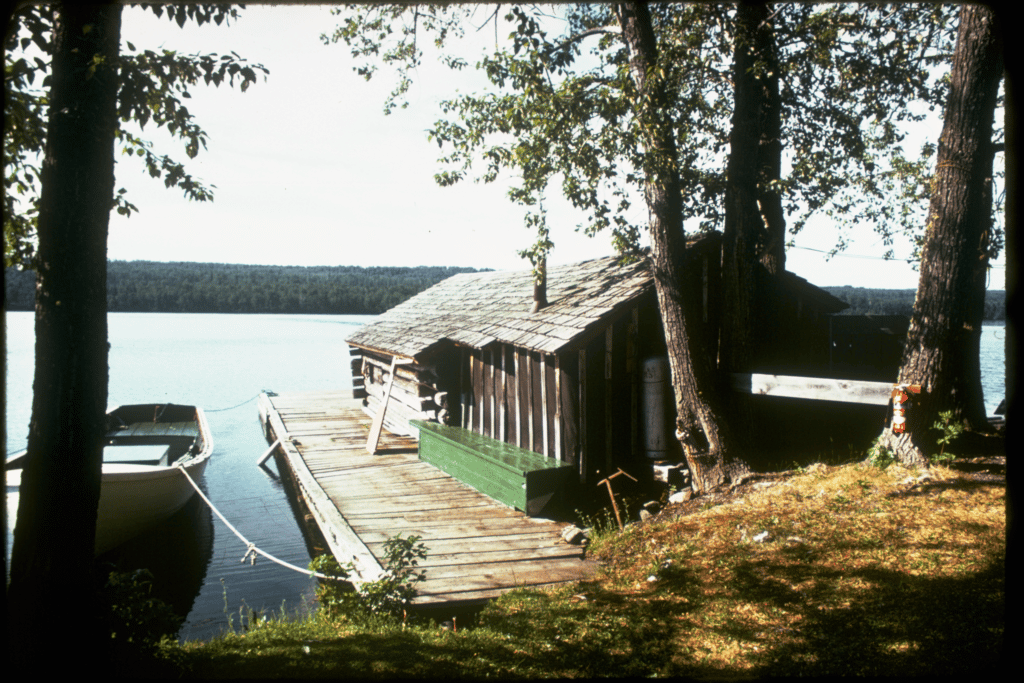
CHECK OUT: 10 FASCINATING Facts About Gates Of The Artic National Park
Why Trust Us About Isle Royale National Park?
We’re Jim Pattiz and Will Pattiz, collectively known as the Pattiz Brothers (and sometimes the Parks Brothers) and we absolutely LOVE the national parks.
You should probably know that we don’t just make this stuff up out of thin air. We’ve spent our entire adult lives exploring and filming America’s national parks and public lands.
We’ve worked with the National Park Service, the Department of Interior, USDA, and the U.S. Forest Service for years creating films on important places and issues. Our work has been featured in leading publications all over the world and even some people outside of our immediate family call us experts on the national parks.

Meet The Parks Brothers
Map Of Isle Royale National Park
List Of Isle Royale National Park Facts
- Isle Royale Had An Active Sea-Faring Trade
- The Park Is Not Easily Accessible
- Isle Royale Is A UNESCO International Biosphere Reserve
- The Park Is Home To A Variety Of Creatures
- Isle Royale Is Made Up Of Many Islands
- Isle Royale Is One Of The Least Visited National Parks
- The Park Has A Wolf Relocation Program
- Isle Royale Has A History Of Deadly Fires
- Isle Royale Has Many Bird Species
- There Have More Than 25 Shipwrecks At Isle Royale
- The Park Closes For Winter
We Hope You’ll Follow Our Journey
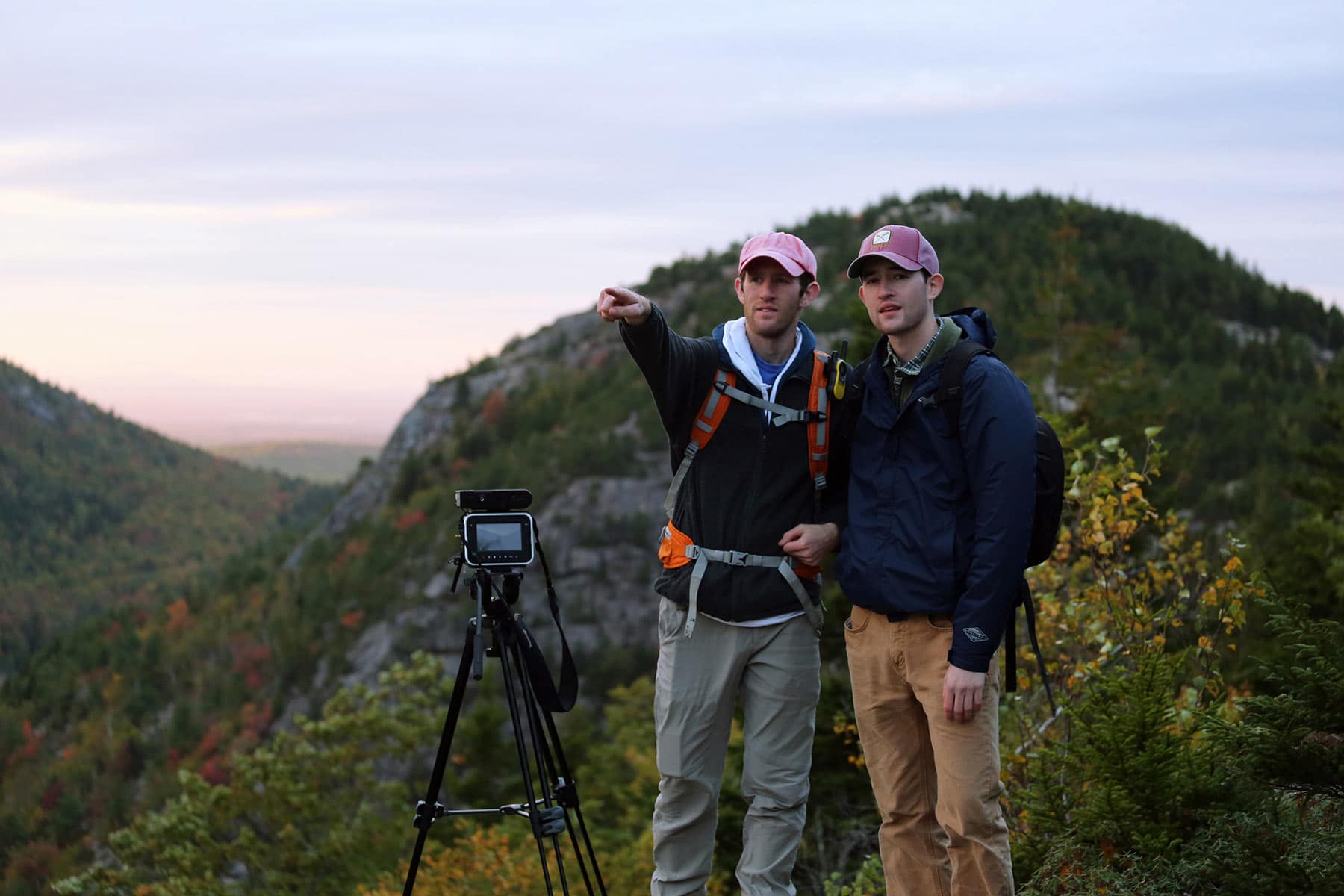
Our goal here at More Than Just Parks is to share the beauty of America’s national parks and public lands through stunning short films in an effort to get Americans and the world to see the true value in land conservation.
We hope you’ll follow our journey through the parks and help us to keep them the incredible places that they are. If you’re interested joining the adventure, sign up below!
Helpful Articles
Michigan National Parks: 6 Beautiful Michigan National Parks You Need To See
National Parks: All 63 National Parks Ranked By Experts
National Monuments: Ultimate List Of National Monuments
Landmarks: 25 Famous Bucket List Landmarks In America (MUST-SEE)
Park Rangers: A Brief (& Informative) History Of America’s National Park Rangers
Gifts: 50 BEST National Park Gifts For The National Park Fan In Your Life
Books: 45 BEST National Parks Books
Revolutionary War Sites: 10 BEST Revolutionary War Sites In America
Civil War Sites: 10 BEST Civil War Sites In America
Civil Rights Sites: 10 BEST Civil Rights Sites In America
National Parks In Movies: Look Familiar? 25+ CLASSIC Movies Filmed In The National Parks
Television Shows: Look Familiar? 10+ CLASSIC Television Shows Filmed In The National Parks



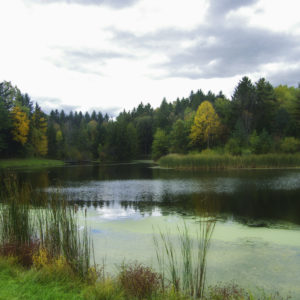

Leave a Reply